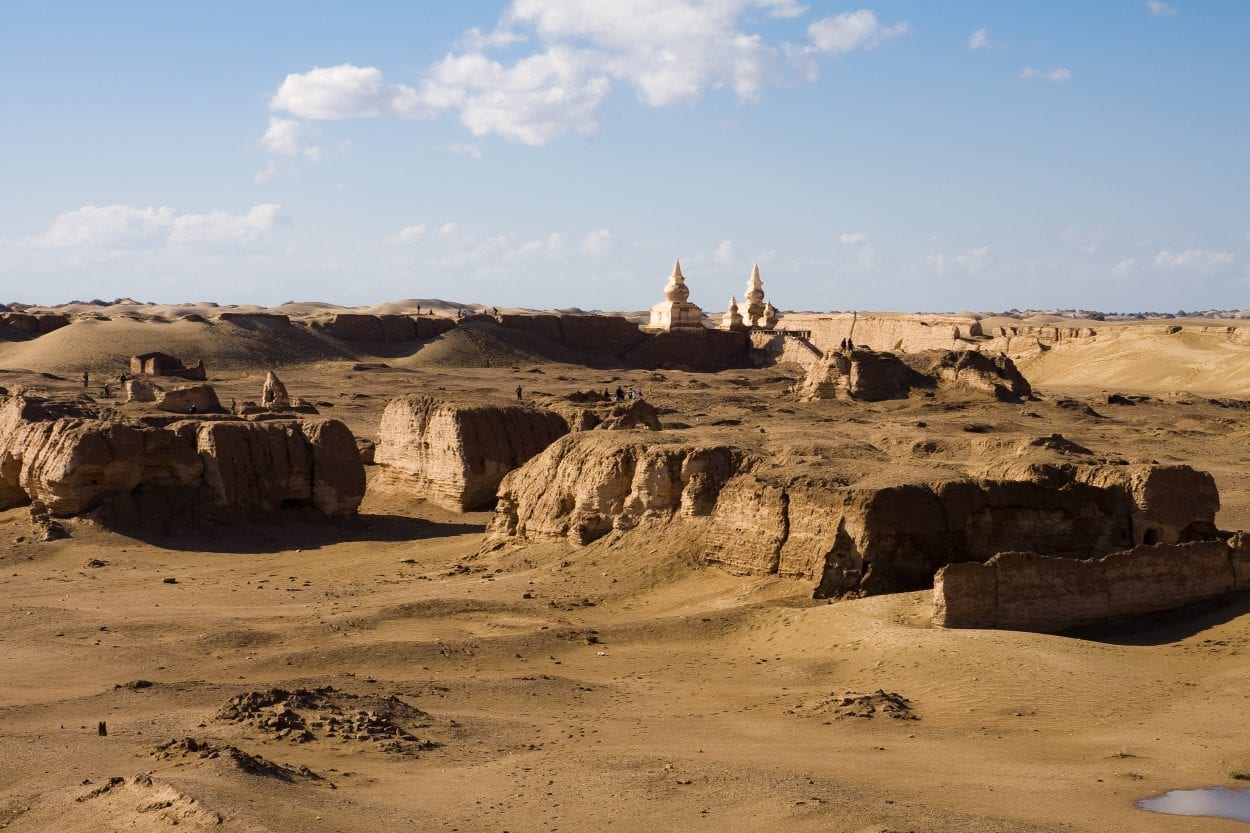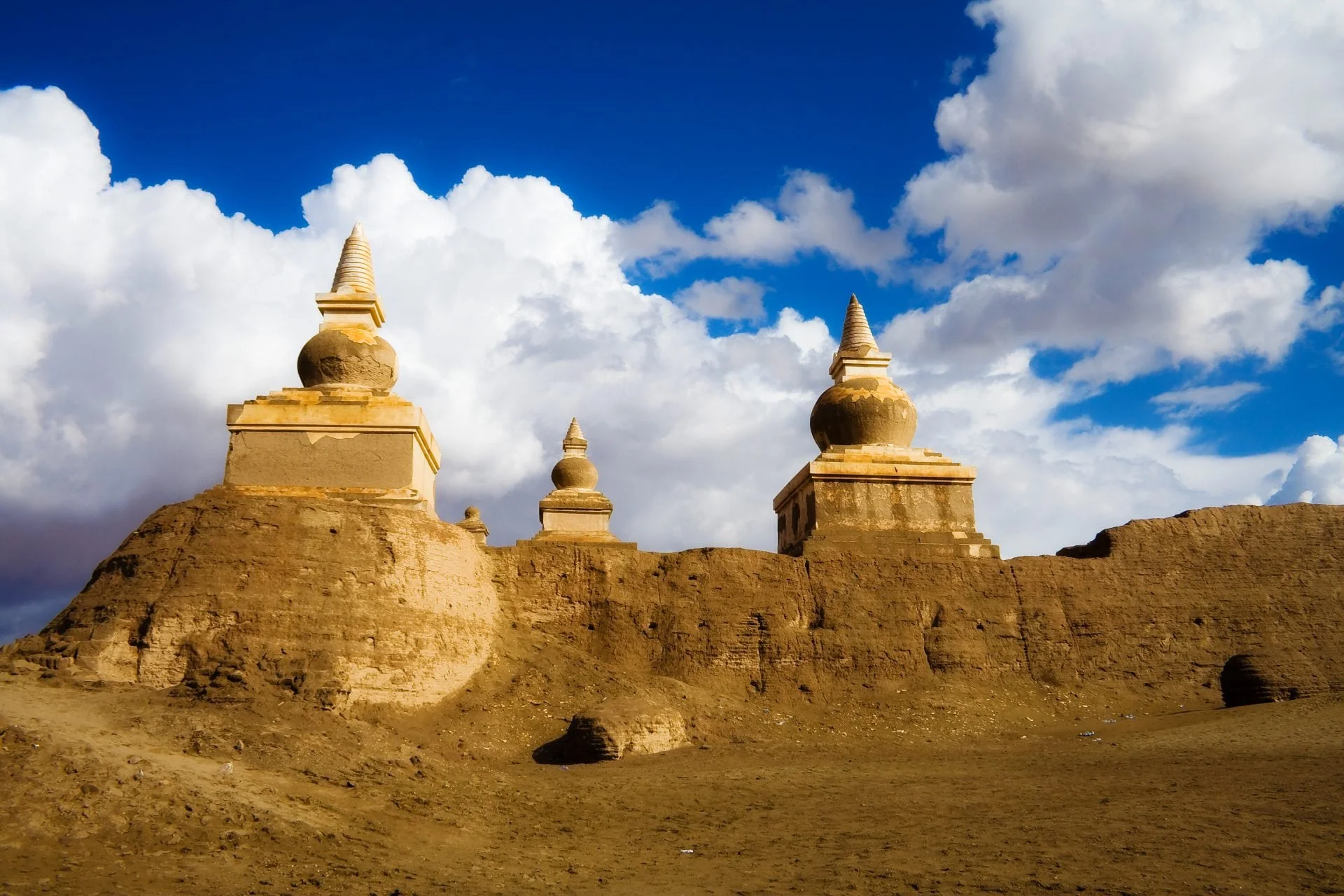Khara-Khoto, also called Khar khot (meaning “black city” in Mongolian) is a ruined fortified city near the Juyan Lake Basin in the far west of Inner Mongolia, China.
The city was a centre of religious learning, art, and a trading hub that was founded in AD 1032 as a Tangut stronghold of the Tibeto-Burman tribal union, emerging into the empire of Western Xia. Western Xia occupied the area round the Hexi Corridor, a stretch of the Silk Road on the trade route between North China and Central Asia.
In the early 13th century AD, Genghis Khan, ruler of the Mongols began a series of campaigns raiding settlements in Western Xia and conquered the neighbouring Uyghurs to the west. After Western Xia supported Mongol expansion in a political move, relationships broke down when the Tanguts stopped supplying troops in tribute and refused to send a hostage prince to the Mongol court.
In response, Genghis Khan attacked Western Xia with a force of approximately 180,000 soldiers and conquered Khara-Khoto in AD 1226. Under Mongol rule, the city continued to flourish and was described in the Travels of Marco Polo as Etzina or Edzina (identified as Khara-Khoto) in which Marco Polo stated:
“When you leave the city of Campichu you ride for twelve days, and then reach a city called Etzina, which is towards the north on the verge of the Sandy Desert; it belongs to the Province of Tangut. The people are Idolaters, and possess plenty of camels and cattle, and the country produces a number of good falcons, both Sakers and Lanners.
The inhabitants live by their cultivation and their cattle, for they have no trade. At this city you must needs lay in victuals for forty days, because when you quit Etzina, you enter on a desert which extends forty days’ journey to the north, and on which you meet with no habitation nor baiting-place.”

According to one of the many Mongolian legends, in the late 14th century AD the Mongol ruler Khara Bator was surrounded in Khara-Khoto by the armies of China’s Ming dynasty who diverted the waters of the Ejin River that fed the city’s water supply.
As the inhabitant’s thirst grew deadly, Khara Bator recognised his fate, and insane with fury he murdered his family—then turned his sword upon himself and committed suicide.
Another version of the legend holds that Khara Bator made a breach in the north-western corner of the city wall and fled, which corresponds with the Ming dynasty annals which states:
“In the fifth year of Hungu (1372), General Feng Sheng and his army reached Edzina. The town’s defender Buyan’temur surrendered, and Chinese troops reached the mountains of Bojiashan. The ruler of Yuan, Gyardzhipan’, fled. His minister… and 27 others were captured, together with ten or more thousand head of horses and cattle.”
After the city was taken, Khara-Khoto was abandoned and swallowed by the sands of the Gobi Desert until it was rediscovered in the early 20th century.
Header Image Credit : qian – Shutterstock





